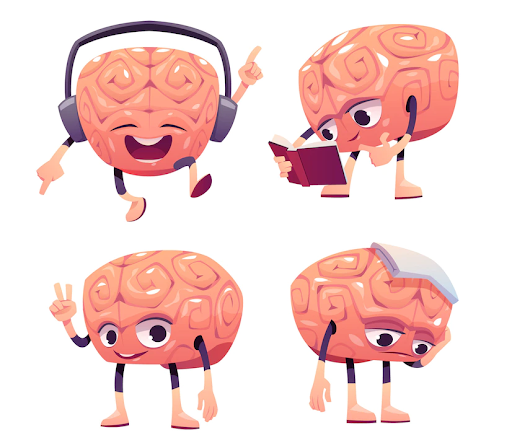What is Neuroplasticity and How It Can Change Your Life
The capacity of the brain to change its structure and function in response to new information and experiences is referred to as neuroplasticity, which is synonymous with the phrase “brain plasticity.” Nevertheless, when people talk about the brain’s capacity for plasticity, they are not arguing that the brain is in any way analogous to plastic.
The brain’s malleability may be characterized as its ability to be “easily affected, taught, or controlled,” and the term “plasticity” relates to this capacity. The term “neuron” refers to the nerve cells known as neurons, which are the fundamental components of the brain and nervous system. Therefore, the process of nerve cells changing or adapting is known as neuroplasticity.
What does it mean to have neuroplasticity?
Approximately one hundred billion neurons make up the human brain.
Early researchers were under the impression that neurogenesis, often known as the production of new neurons, ceased not long after birth.
The amazing ability of the brain to restructure pathways, make new connections, and even, in some circumstances, develop new neurons is referred to as neuroplasticity, which is synonymous with brain plasticity. This ability has only recently come to the forefront of scientific understanding. Learning to practice neuroplasticity is known as a neuroplasticity training program.
Neuroplasticity may be broken down into two primary categories:
Functional plasticity: The capacity of the brain to relocate functions away from regions of the brain that have been injured to regions of the brain that have not been harmed.
Structural plasticity: The capacity of the brain to really alter its physical structure as a direct consequence of experience.
What exactly does “neuroplasticity” mean?
The remarkable ability of the brain to alter and adapt is referred to as neuroplasticity. It is a term that refers to the physiological changes that take place in the brain as a direct consequence of the interactions that we have with our surroundings. The connections that exist between the cells in our brains continue to reconfigure themselves in response to our shifting requirements from the moment that brain development first starts in utero until the day that we pass away. Because of this dynamic process, we are able to gain knowledge from a variety of situations and adjust accordingly.
Recovery from brain injuries almost always involves neuroplasticity in some form or another. In fact, it serves as the foundation for a significant portion of the cognitive and physical rehabilitation procedures that we use. Rebuilding the connections between the neurons, which make up the nervous system, is one of the goals of the rehabilitation process. Because of this “re-wiring” of the brain, it is sometimes feasible for a region of the brain that has not been injured to take over the management of a function that was previously governed by an area that has been damaged. These kinds of alterations and expansions may be readily accommodated by the intercellular connections, which are endlessly responsive to them.
In addition, new information is coming to light concerning a process called neurogenesis, which refers to the creation of new brain cells. Recent studies have shown that neurogenesis does, in fact, continue into and throughout adult life, although it is limited to certain regions of the brain. Researchers are attempting to identify the regions of the brain that are responsible for the development of new cells, find a technique to either stimulate or stifle the process of neurogenesis and figure out how newly formed neurons may become functionally integrated into the existing brain. It is hoped that patients may eventually be able to heal from brain injuries more effectively with the use of this knowledge.
How does Neuroplasticity work?
The brain of an infant and young kid develops quickly throughout the first few years of life. Every neuron in the cerebral cortex contains around 2,500 synapses, which are the tiny gaps between the neurons that allow nerve impulses to be sent when a person is born. This number has ballooned to a staggering 15,000 synapses per neuron by the time a child reaches the age of three.
On the other hand, a typical adult has just around half of that amount of synapses in their brain. Why? Because as we acquire new experiences, some connections get stronger while others become weaker or disappear entirely. Synaptic pruning is the term used to describe this process.
Neurons that are utilized regularly form more stable connections, while neurons that are engaged seldom or not at all ultimately perish. The brain is able to adapt to its changing surroundings by forming new connections and discarding ineffective ones. You can learn more about adapting neuroplasticity with the help of a neuroplasticity training program.
There are primarily two ways in which one may drive neuroplasticity
Neuroplasticity is inherently reversible due to the fact that it operates according to the Hebbian rule. Neurons that fire together wire themselves together, while neurons that don’t don’t wire themselves together. You have a brain that functions better when it is put to work. In a process known as “synaptic pruning,” neural pathways become less robust as a result of infrequent use of both information and behaviors, eventually leading to the potential loss of all connections between them. Changes in neuroplasticity occur in response to stimuli that are processed in the brain, and these stimuli can come from either within the body or from the outside.
The Most Important Method, Number One: Change Induced From Without
Your brain is formed by the experiences you’ve had throughout your life, beginning in childhood and continuing into adulthood. Little people’s brains become wired with connections based on their experiences as they grow, interact with other people, and discover the world around them. When you’re young, you don’t have much say in the events that take place in your life. When we reach adulthood, the habits we maintain become imprinted on our brains. Your routines, whether they’re healthy or not, end up being hardwired into your brain. The following are some examples of external factors that might influence change:
Experiment with something new.
This could involve something as involved as mastering a musical instrument, going back to school, taking dance classes, or learning a new language. It may also be as easy as going to a different restaurant, reading a book that is not in your typical genre (especially one that is fiction), or listening to music that is not your typical preference.
Change things up a little.
Make your way up the stairs with your non-dominant leg, eat with your non-dominant hand, and brush your teeth with your non-dominant arm. It would help if you could move the mouse to the opposite side of the keyboard. Move to the other side of the bed each night. Try going to work via a different route. Stop letting your mind operate on autopilot.
You need to turn off the GPS.
Make use of both your wits and a map. You could even go out of your way to get lost so that you could challenge yourself to find your way back without using a GPS or a map. (This activity, along with many others like it, is collectively known as orienteering.)
Try a different approach to your workout.
Experiment with something completely new. If you’re going to be biking, try different routes and terrains. When you go running or walking, try to do it outside as much as possible, put away your headphones, and switch up the terrain, paths, and scenery. The purpose of this is to give your brain a good workout.
Educate your mental faculties.
There is a significant amount of discussion regarding whether or not brain training is effective. The efficacy of the EEG Neurofeedback that we provide is unequivocally established in our minds. Keep in mind that not all forms of mental exercise are the same. There is a limit to how far certain mobile games (like Lumosity) can progress.
Take a trip.
Explore a new place, whether it be a new city, a new country, or just the next town over. Changing your environment can jolt your brain into action, ignite your creative spirit, and even make you feel happier. Your brain will have to work harder because it will no longer be in “auto-pilot” mode. When you are in an unfamiliar place, you need to put even the smallest details into consideration.
Be social.
Engage in direct conversation with other people. Participate in conversations and pay attention to what is being said. Make new friends who are different from the ones you already have. There is a correlation between higher levels of social engagement and improved cognitive functioning as well as lower risks of cognitive decline.
Change that is driven from within: A second method
Mindfulness. The study on the beneficial effects of mindfulness on the brain and mental health refers to neuroplasticity as the underlying mechanism responsible for these effects. You may gain knowledge of and control over your brain’s Default Mode Network (DFM) via the practice of mindfulness. This involves purposefully turning attention inward and fostering awareness of the breath, as well as of one’s thoughts and emotions. By deliberately guiding your DFM, you are able to disrupt regular patterns of thinking and reorient your brain in the here and now.
Meditation improves neuroplasticity, which is only one of the numerous advantages it has been shown to have for the brain by scientific research. It has been shown that meditation lowers levels of stress, anxiety, and sadness, all of which have been established as factors that inhibit neurogenesis, or the creation of new brain cells. You also don’t have to sit in meditation for years on end before you start experiencing advantages from it. After just eight weeks of daily meditation, the brain exhibited signs of change in one research study.
Visualization Regardless of whether something is real or imagined, your brain will always respond by firing neurons and releasing chemicals. On brain scans, creative ideas seem to stimulate a large number of similar brain regions, all of which have direct and immediate effects on you, both physically and emotionally.
There is not much of a difference between visualizing doing an action and actually carrying it out, according to neuroscientific research. Therefore, with the use of visualization, you are able to put your imagination to work for you in order to modify your brain. The effect of neuroplasticity training programs on a person’s body, ranging from the power of their muscles to the circuits in their brain, has been shown through research.

